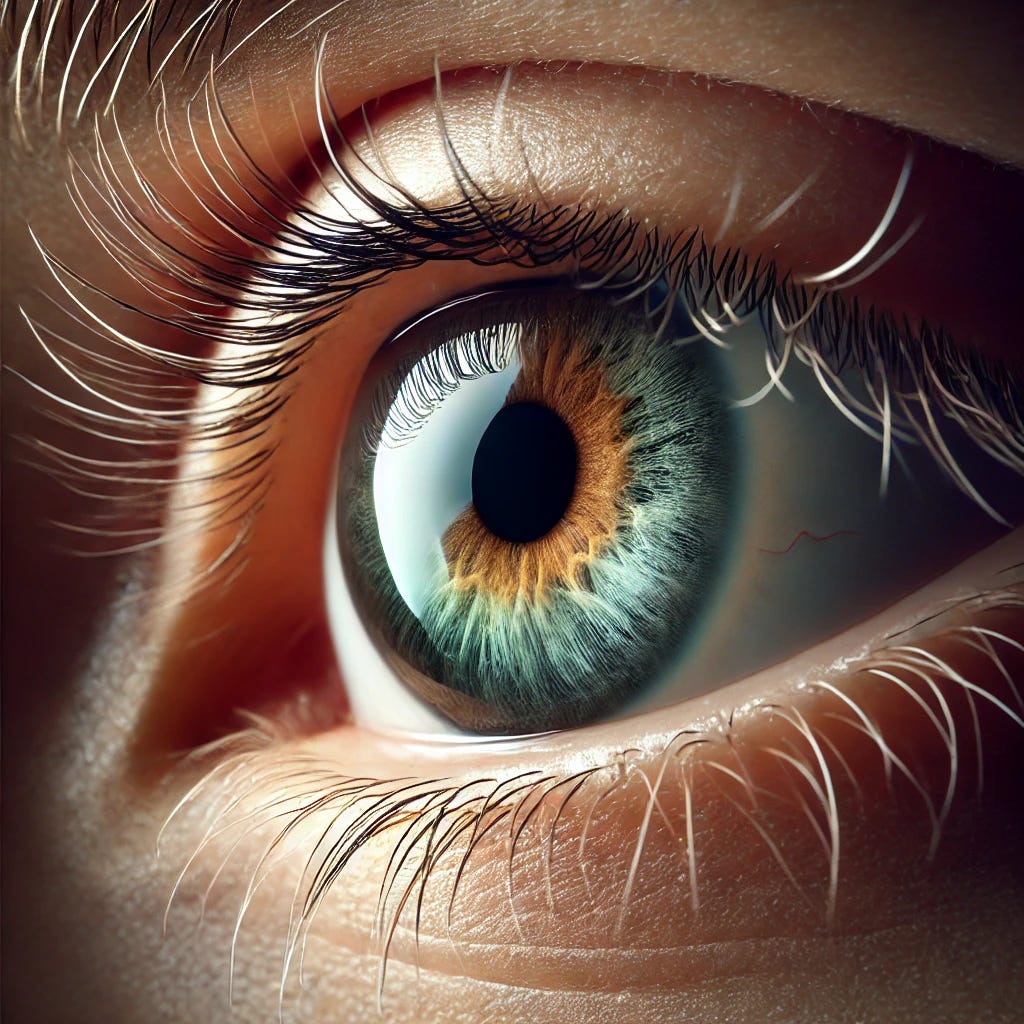🟠 Geographic Atrophy: The Advanced Stage of Dry Macular Degeneration
A Holistic Ophthalmologist’s Guide to Slowing Vision Loss and Supporting Retinal Health
Please hit the ❤️ at the top or bottom of this email to help others discover All About Vision With Dr. Kondrot. Your subscription directly supports my ongoing humanitarian work—delivering free eye surgeries and care where it's needed most.
STORY AT A GLANCE
Geographic Atrophy (GA) is the late stage of dry age-related macular degeneration (AMD), marked by progressive death of the cells in the retina’s center.
It leads to permanent blind spots, trouble reading, and loss of fine visual detail—even though peripheral vision often remains intact.
GA progresses slowly but irreversibly, and there’s currently no cure—making early detection and lifestyle intervention critical.
A holistic strategy focusing on antioxidant-rich nutrition, inflammation control, and retinal support can help preserve remaining vision.
Emerging treatments may slow GA, but long-term protection still depends on root-cause management: metabolic health, oxidative stress, and cellular aging.
👁️ What Is Geographic Atrophy?
Geographic Atrophy is a form of advanced dry AMD, where retinal pigment epithelium (RPE) and photoreceptors in the macula begin to die off in distinct patches. These patches enlarge over time, forming areas of irreversible central vision loss.
The term “geographic” comes from the appearance of these lesions: sharply defined areas of degeneration that resemble islands or continents on a map.
GA accounts for nearly 20% of all legal blindness in industrialized countries. The macula, which controls reading, facial recognition, and color perception, becomes progressively nonfunctional.
❗ Key Symptoms of Geographic Atrophy
Early stages may be subtle. As it progresses, patients may experience:
Blurry or distorted central vision
Difficulty reading, especially in low light
Colors appearing faded
Trouble recognizing faces
Blind spots in the central field (scotomas)
Unlike wet AMD, GA does not involve bleeding or fluid leakage—so progression is silent and easy to miss without regular eye exams.
🔬 What Causes Geographic Atrophy?
GA is the result of long-term oxidative stress, mitochondrial damage, and inflammation in the retina. Risk factors include:
Age (typically over 60)
Genetics (e.g., complement factor H mutations)
Smoking
Poor diet (low in carotenoids and antioxidants)
Uncontrolled oxidative stress and chronic inflammation
Blue light exposure and poor macular protection
The retinal pigment epithelium (RPE) cells—responsible for nourishing photoreceptors—start to break down, leading to cell death and atrophy in the overlying retinal tissue.
🧠 Why Holistic Care Is Essential
There’s currently no cure for GA. Pharmaceutical options like pegcetacoplan (Syfovre) and avacincaptad pegol (Izervay) may slow progression but do not reverse vision loss.
That’s why my holistic approach focuses on:
Slowing the rate of retinal degeneration
Protecting surviving macular cells
Addressing the root drivers of oxidative damage and inflammation



